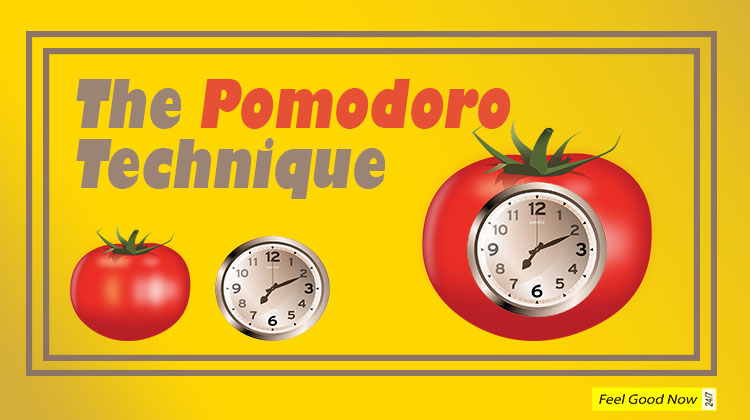
One of the valuable assets in all our lives is time. In a day, there are 24 hours, which are the same for people worldwide. There are some things in life that we cannot buy, and one of those precious things is time. Taylor Swift and Elon Musk have the same number of hours as you. So don’t complain about having less time. How we use our time plays a significant role in our personal and professional success. You must have heard people making jokes about needing more hours in the day to get things done completely. The fact is that such people might be busy, but it does not mean that such people are productive. Super productive people utilize their time in such a way that makes them appear to have a superpower. The Pomodoro technique is one of the simple strategies to juice out maximum productivity from the available time in the day.
What is the Pomodoro Technique?
In the late 1980s, a university student Francesco Cirillo developed the Pomodoro Technique. He was struggling to focus on his studies and complete his assignments. He tried to commit himself to concentrating for just 10 minutes of his study time.

He used a tomato-shaped kitchen timer for this activity, and in Italian, a tomato is called Pomodoro. And thus, this time management technique is called the ‘Pomodoro’ Technique.
The Pomodoro method aims to give the user maximum focus and creative freshness. The process enables them to complete projects faster with less mental stress.
Timeboxing
The idea behind the Pomodoro technique is something like “Timeboxing.” Timeboxing is when we allocate a specific period to a planned activity. It would be best if you stopped the work after the time expires.

This method is suitable as it ensures that the action does not consume more time than needed. For instance, you might decide to check your email or your social media feeds. There is no starting or ending point for them. You can spend an hour or two or the whole day as there is no ending point. Timeboxing enables you to set specific limits in place. With this technique, your focus becomes laser-like.
25 minutes work & 5 minutes break
The Pomodoro technique is quite simple. You budget your time into short increments and take breaks periodically to accomplish your work in a day. You do your work for 25 minutes and then relax for five minutes. Thus, Pomodoro is a work period of 25 minutes.

You can take a longer break of 15-30 minutes after four ‘Pomodoro’ work sessions have passed. These four work sessions are equivalent to 100 minutes of the work time, having a short interval of 15 minutes. But just because you split the activity into parts, the work does not seem too daunting or draining.
Apply Pomodoro Technique to Boost Your Productivity
The breaks between the intense Pomodoro sessions enable you to keep your mind fresh and focused. As per the official Pomodoro website, the technique is straightforward, and one can see the results quickly.
The technique helps you to climb the massive mountain of some extensive project work easily and navigate comfortably through the stressful forests of messed-up to-do lists.

Break the mountains into small chunks of pomodoros and quickly wrap up the urgent activities making noise on your to-do lists. The technique forces you to stick to your strict timings, and Voila! You do more in less time!
Wrap up the current task quickly within the specified time, and the projects in hand can be spread over two or three pomodoros, thus keeping you away from frustration.
Thus you grab ‘procrastination’ by its neck and show it the exit door! On seeing this, frustration also leaves your mind on its own.
And from that day onward, you begin to ‘respect the tomato’ like never before!
Benefits of Pomodoro Technique
Below are the tangible benefits of the Pomodoro technique:
1) Set Time for Distractions
Working throughout the day makes it apparent that we get distracted every few minutes. Distraction happens as we don’t plan in time for breaks when we are allowed to get distracted.

With this technique, you know you will get a break, and your fun-loving side of the brain waits for its time quietly and allows the work-loving side to do its job with complete focus.
2) Limits Open-Ended Work
If you are not careful, open-ended work like studying, research, and writing can drag on for hours together. With pomodoros, you can take a break and put a time limit on them. It also will enable you to ‘complete’ the work in the specified time and break down the job into manageable lumps.
3) Helps you to Move Away from Procrastination
The Pomodoro method will keep you motivated; seeing this; procrastination will never dare to enter your mind again.
4) Turns work into a Game
The Pomodoro method is best for you if you are a fan of games. The timer will act as a countdown for the task in hand, and you will feel as if you are working against the clock, trying to ‘finish a level’ or win the game.’

Playing a game will boost your productivity by giving entertainment and a breakup from the challenge. So look at the tomatoes and say, ‘Challenge Accepted!’
Conclusion
The Pomodoro technique is free. You can build your concentration by making your Pomodoro plan daily. Every morning you can add a task to your to-do list to remind yourself to plan out your pomodoros. Each day you can challenge yourself and reflect on what went well and how you can improve and focus on it in the future. The Pomodoro technique is best if you need a systematic way to tackle your daily to-do list; the process depends on person to person. The more you use the method, the more quickly it becomes part of your second nature, thus putting you into a virtuous cycle of extraordinary productivity and success.
You may like:
- Mastering Manifestation: 11 Must-Read Books on the Law of Attraction & their Key Takeaways
- What exactly is the Vortex which Esther (Abraham) Hicks talks about?
- 12 Best Books to Read for Sales Enthusiasts & Key Takeaways
- 175+ Uplifting Self-love Affirmations
- 20+ Steve Jobs Quotes For Big Dreamers
- 70+ Robin Sharma Quotes To Inspire You
Author Profile
- Loves writing on health, home, and personal development topics.






Any comments?